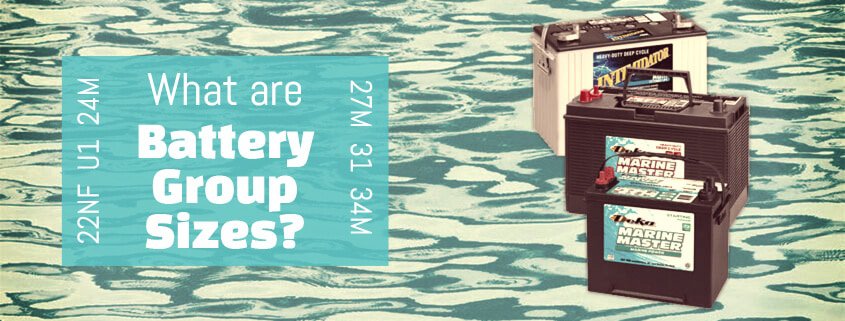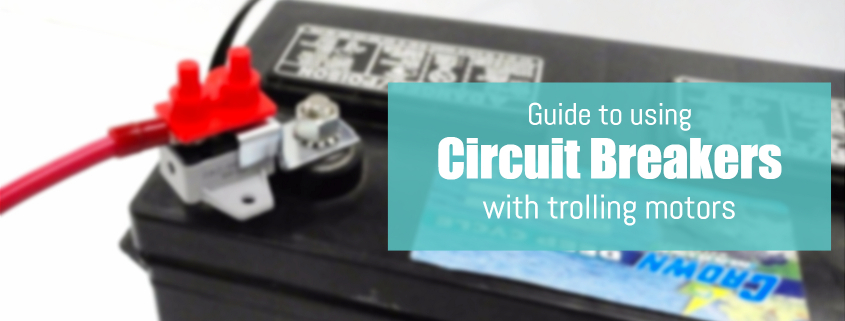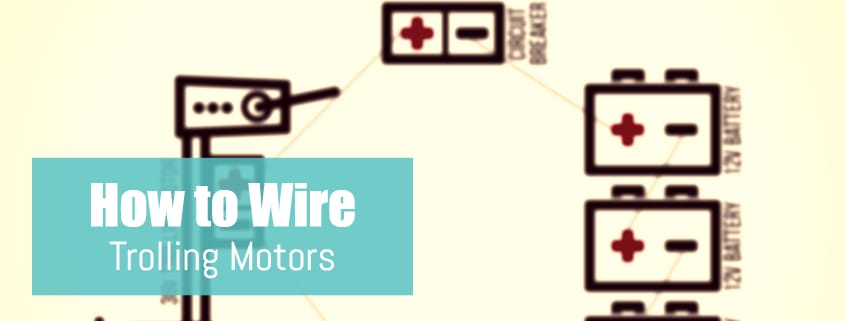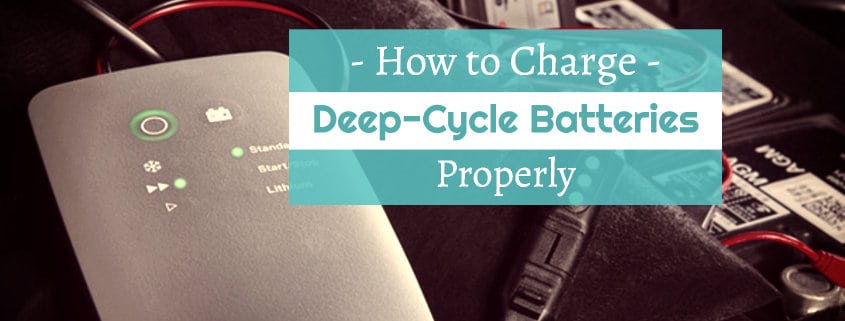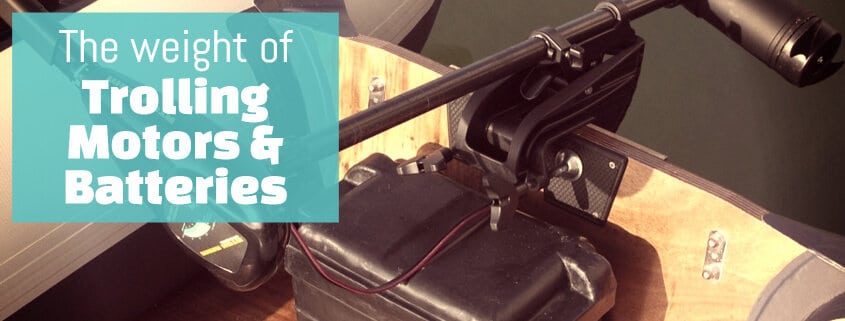If you run a trolling motor on your boat or any other accessories that need to be powered (stereo, fish finder, etc), you will need a marine battery. While searching for batteries, you will come across the term battery group size. But what are battery group sizes exactly?
Contents
What is the meaning of Battery Group Size?
The term “battery group size” simply refers to the battery’s physical case size. It is a specification that you’ll find on all boat batteries.
It is basically the physical measurements of the battery casing as set by the Battery Council International (BCI). The height, width, and length of a battery specify its group size.
You should be able to locate the group size of your battery on the labels.
Here are a few things to keep in mind about battery group sizes:
- A smaller group size generally indicates a larger battery.
- Conversely, a larger group size generally indicates a smaller battery.
Table of common battery group sizes used in boats
Here is a table of the most common battery group sizes that you will use on inflatable boats and traditional boats.
| Battery group size | L (inch) | W (inch) | H (inch) | L (mm) | W (mm) | H (mm) |
|---|---|---|---|---|---|---|
| U1 | 7 3/4 | 5 3/16 | 7 1/8 | 197 | 132 | 181 |
| 21 (R) | 8 3/16 | 6 13/16 | 8 3/4 | 208 | 173 | 222 |
| 22F | 9 1/2 | 6 7/8 | 8 5/16 | 241 | 175 | 211 |
| 22HF | 9 1/2 | 6 7/8 | 9 | 241 | 175 | 229 |
| 22NF | 9 7/16 | 5 1/2 | 8 15/16 | 240 | 140 | 227 |
| 22R | 9 | 6 7/8 | 8 5/16 | 229 | 175 | 211 |
| 24 | 10 1/4 | 6 13/16 | 8 7/8 | 260 | 173 | 225 |
| 24F | 10 3/4 | 6 13/16 | 9 | 273 | 173 | 229 |
| 24H | 10 1/4 | 6 13/16 | 9 3/8 | 260 | 173 | 238 |
| 24R | 10 1/4 | 6 13/16 | 9 | 260 | 173 | 229 |
| 24M(T) | 10 1/4 | 6 13/16 | 9 3/4 | 260 | 173 | 248 |
| 25 | 9 1/16 | 6 7/8 | 8 7/8 | 230 | 175 | 225 |
| 26 (R) | 8 3/16 | 6 13/16 | 7 3/4 | 208 | 173 | 197 |
| 27 | 12 1/16 | 6 13/16 | 8 7/8 | 306 | 173 | 225 |
| 27F | 12 1/2 | 6 13/16 | 8 15/16 | 318 | 173 | 227 |
| 27H | 11 3/4 | 6 13/16 | 9 1/4 | 298 | 173 | 235 |
| 27M | 12 1/2 | 6 13/16 | 9 3/4 | 318 | 173 | 248 |
| 29NF | 13 | 5 1/2 | 8 15/16 | 330 | 140 | 227 |
| 31M | 13 | 6 13/16 | 9 7/16 | 330 | 173 | 240 |
| 33 | 13 5/16 | 6 13/16 | 9 3/8 | 338 | 173 | 238 |
| 34 (R) | 10 1/4 | 6 13/16 | 7 7/8 | 260 | 173 | 200 |
| 34M | 10 1/4 | 6 13/16 | 9 7/16 | 260 | 173 | 240 |
| 35 | 9 1/16 | 6 7/8 | 8 7/8 | 230 | 175 | 225 |
| 36R | 10 3/8 | 7 1/4 | 8 1/8 | 263 | 183 | 206 |
| 40R | 10 15/16 | 6 7/8 | 6 7/8 | 277 | 175 | 175 |
| 41 | 11 3/16 | 6 7/8 | 6 7/8 | 293 | 175 | 175 |
| 42 | 9 5/16 | 6 13/16 | 6 13/16 | 243 | 173 | 173 |
| 43 | 13 1/8 | 6 7/8 | 8 1/16 | 334 | 175 | 205 |
| 45 | 9 7/16 | 5 1/2 | 8 15/16 | 240 | 140 | 227 |
| 46 | 10 3/4 | 6 13/16 | 9 | 273 | 173 | 229 |
| 47 | 9 11/16 | 6 7/8 | 7 1/2 | 246 | 175 | 190 |
| 48 | 12 1/16 | 6 7/8 | 7 9/16 | 306 | 175 | 192 |
| 49 | 15 | 6 7/8 | 7 3/16 | 381 | 175 | 192 |
| 50 | 13 1/2 | 5 | 10 | 343 | 127 | 254 |
| 51 | 9 3/8 | 5 1/16 | 8 13/16 | 238 | 129 | 223 |
| 51R | 9 3/8 | 5 1/16 | 8 13/16 | 238 | 129 | 223 |
| 52 | 7 5/16 | 5 13/16 | 8 1/4 | 186 | 147 | 210 |
| 53 | 13 | 4 11/16 | 8 1/4 | 330 | 119 | 210 |
| 54 | 7 5/16 | 6 1/16 | 8 3/8 | 186 | 154 | 212 |
| 55 | 8 5/8 | 6 1/16 | 8 3/8 | 218 | 154 | 212 |
| 56 | 10 | 6 1/16 | 8 3/8 | 254 | 154 | 212 |
| 57 | 8 1/16 | 7 3/16 | 6 15/16 | 205 | 183 | 177 |
| 58 | 10 1/16 | 7 3/16 | 6 15/16 | 255 | 183 | 177 |
| 58R | 10 1/16 | 7 3/16 | 6 15/16 | 255 | 183 | 177 |
| 59 | 10 1/16 | 7 5/8 | 7 3/4 | 255 | 193 | 196 |
| 60 | 13 1/16 | 6 5/16 | 8 7/8 | 332 | 160 | 225 |
| 61 | 7 9/16 | 6 3/8 | 8 7/8 | 192 | 162 | 225 |
| 62 | 8 7/8 | 6 3/8 | 8 7/8 | 225 | 162 | 225 |
| 63 | 10 3/16 | 6 3/8 | 8 7/8 | 258 | 162 | 225 |
| 64 | 11 11/16 | 6 3/8 | 8 7/8 | 296 | 162 | 225 |
| 65 | 12 1/16 | 7 1/2 | 7 9/16 | 306 | 190 | 192 |
| 70 | 8 3/16 | 7 1/16 | 7 11/16 | 208 | 179 | 196 |
| 71 | 8 3/16 | 7 1/16 | 8 1/2 | 208 | 179 | 216 |
| 72 | 9 1/16 | 7 1/16 | 8 1/4 | 230 | 179 | 210 |
| 73 | 9 1/16 | 7 1/16 | 8 1/2 | 230 | 179 | 216 |
| 74 | 10 1/4 | 7 1/4 | 8 3/4 | 260 | 184 | 222 |
| 75 | 9 1/16 | 7 1/16 | 7 11/16 | 230 | 179 | 196 |
| 76 | 13 1/8 | 7 1/16 | 8 1/2 | 334 | 179 | 216 |
| 78 | 10 1/4 | 7 1/16 | 7 11/16 | 260 | 179 | 196 |
| 85 | 9 1/16 | 6 13/16 | 8 | 230 | 173 | 203 |
| 86 | 9 1/16 | 6 13/16 | 8 | 230 | 173 | 203 |
| 90 | 9 11/16 | 6 7/8 | 6 7/8 | 246 | 175 | 175 |
| 91 | 11 | 6 7/8 | 6 7/8 | 280 | 175 | 175 |
| 92 | 12 1/2 | 6 7/8 | 6 7/8 | 317 | 175 | 175 |
| 93 | 15 | 6 7/8 | 6 7/8 | 354 | 175 | 175 |
| 95R | 15 9/16 | 6 7/8 | 7 1/2 | 394 | 175 | 190 |
| 96R | 9 9/16 | 6 13/16 | 6 7/8 | 242 | 173 | 175 |
| 97R | 9 15/16 | 6 7/8 | 7 1/2 | 252 | 175 | 190 |
| 98R | 11 3/16 | 6 7/8 | 7 1/2 | 283 | 175 | 190 |
Group size considerations when purchasing new batteries
When it comes to deep cycle marine batteries, a larger group size implies that you should have a higher Amp Hour (Ah) capacity.
If you realize that your trolling motor is weak by the time you are finishing up on a day of fishing in windy conditions, you’d be wise to upgrade and get a larger Ah battery. This will mean that the new battery will have a different group size.
Many battery group sizes are very similar, differing by fractions of an inch. These batteries can be used interchangeably, if:
- the new battery fits the ‘old’ battery’s tray,
- the new battery has equal or better charging and discharging characteristics than to the old battery.
The following are notable considerations to make when shopping for a new battery:
- Find marine batteries that have Group Size with the letter “M” in the name. This is what the BCI designate for use in marine boats and RVs. Marine batteries have a distinct construction that differs from automotive batteries.
- Consider the available space in your boat prior to buying the battery. There is not much free space in inflatable boats, especially if you have lots of gear. With traditional boats, the battery has to be compatible with the battery tray size. Alternatively, you can install a bigger tray for larger group size.
- If your issues with powering the electronics and accessories over a whole day persist, you may have a wiring fault. Confirm if your boat has enough wire gauge to support the draw of current from your electronics.
- You might also want to add a dedicated dual-purpose battery which will exclusively power the fish finders on your boat and leave the less demanding components to the normal cranking battery.
- On traditional boats, be sure to install a proper onboard marine battery charger so that your battery investments are well cared for and maintained.
Basic Types of Boat Batteries
Generally, there are two kinds of 12-volt batteries.
- The first one is the cranking/starting battery, which is tailored to start the main engine.
- The other one is the deep-cycle battery, which is used for powering electrical accessories like fish-finders, trolling motors, and radios.
You can also find dual-purpose batteries that perform both of these functions.
Batteries can further be categorized by their construction and conducting medium:
- Wet cell battery (aka flooded battery)
- Gel battery
- Absorbent glass mat (AGM) battery
These all have pros and cons that you should take into account before buying.
It is highly advisable to use only AGM batteries on boats, because they are spillproof, maintenance free, and shock resistant.
If you want to learn more about marine batteries, have a look at my guide on trolling motor batteries.

